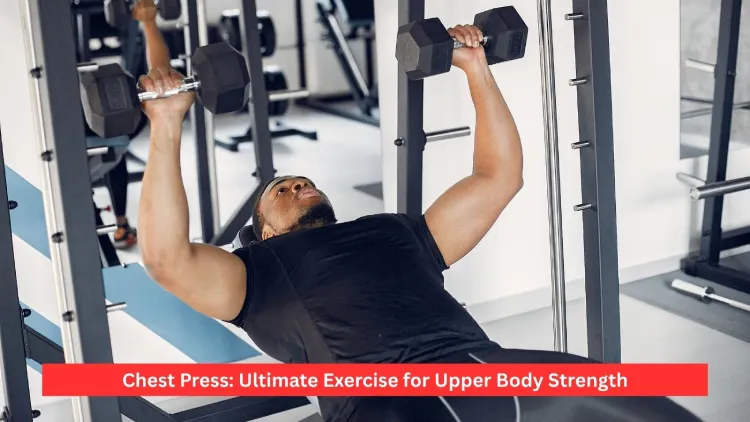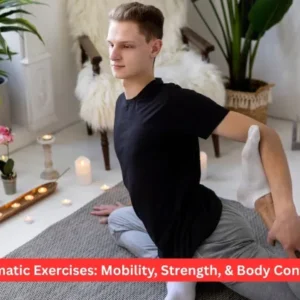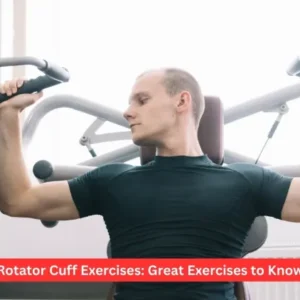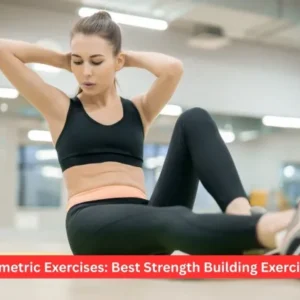Chest press is an intense upper body workout that builds chest muscles and improves the posture of both men and women. It works on the pectoral muscles, shoulders, and triceps, and enables to enhancement of the performance of physical functions and the overall appearance. In women, it flattens and makes the chest, and in men, it makes the arms and legs appear huge and defined. Still, regardless of whether it is done with the help of dumbbells, barbells, or a machine, the chest press is helpful in fat-burning, enhancing metabolism and developing muscle balance, thus being an essential accessory in a training program.
- What Is a Chest Press?
- The Muscles engaged in a Chest Press
- Benefits of the Chest Press
- Between right and wrong on the Chest Press
- Common Mistakes to Avoid
- Types and forms of the Chest Press
- The Chest Press Effect on Women
- Chest Press and Fat Loss
- Training Frequency and Recovery
- Interesting Facts and Myths
- Conclusion
- Frequently Asked Questions
What Is a Chest Press?
A chest press is a compound exercise, and it mainly involves the pectoralis major, a large muscle of the chest which helps in pushing the body. The triceps and shoulders are also involved in the exercise, and this gives the entire upper-body workout.
When you push weight, but not on your chest, and thereby not resting on your chest, you are putting pressure on more than one muscle to pull. In the long run, it results in increased muscle tone and definition as well as strength. In women, regular chest exercises can raise and tighten the breast tissue to give a younger appearance and in men, it will make the chest grow bigger and add more bulk to the upper body.
The chest press can be done in several ways, including:
- Barbell Chest Press: This is the best when it comes to general strength.
- Dumbbell Chest Press: It enhances balance and the involvement of stabiliser muscles.
- Machine Chest Press: It has controlled action, and it is suitable for those who are new.

The Muscles engaged in a Chest Press
Chest press could be viewed as a multi-joint exercise that involves the following muscles:
- Pectoralis Major: This is the primary chest muscle that is involved in pushing strength.
- Anterior Deltoids: These are the muscles of the shoulder that help in the pressing movements.
- Triceps Brachii: This is the muscle found on the end of your upper arm that folds your arm.
- Core and Serratus Anterior: They ensure that your torso is stable, in line and that your spine is guarded in the course of pressing actions.
This is the involvement of many muscle groups and makes the chest press an effective means of shaping a strong and balanced upper body.
Benefits of the Chest Press
The benefits associated with the regular performance of the chest press among men and women are as follows:
Builds Upper Body Strength:
The strength enhanced by the chest press is the chest, shoulders, and triceps, which enhances push power and performance during everyday affairs.
Enhances Muscle Definition and Tone:
To a woman, it will create a firmer breast zone as well as lift the chest area. In men, it builds the thickness and shape of muscles.
Supports Posture and Balance:
A stronger chest and shoulder will result in improved posture, making the individual less prone to slouching because of having weak pectorals.
Increases Metabolism and Lowers Fat:
Since the chest press involves the involvement of big muscles, it is supportive of fat loss, and this includes the fat that persists around the belly.
Enhances Confidence:
A fit top body enhances the unity of the entire body and helps to build an elevated appearance and execution assurance.
Enhances Hormonal Balance and Circulation:
In the case of women, moderate training on the chest ensures that the upper body has healthy blood flow and that the body tones the tissues to ensure that they are firm enough naturally.

Between right and wrong on the Chest Press
The chest press is a safe exercise that will give optimum outcomes when done properly.
Step-by-Step Guide:
- Setup: Sit in a hard position with your feet firmly attached to the ground.
- Grip: Grasp at the level of his chest a dumbbell or a barbell, with his palms up.
- Engage Core: Have a bit of a humpback, keep the shoulders in.
- Press Up: Breath out and stretch the weights to full extension upwards.
- Lower Slowly: Breath and straighten the weights until you form a 90-degree angle at the elbows.
- Repeat: Do 3-4 rounds of 8-12 reps to see the best results.
Proper form reduces the stress on joints and tendons as well as improves the muscle action.
Common Mistakes to Avoid
Some of these errors can be avoided to ensure that the chest press is safe and efficient:
- Spinal Strain: This can be caused by too much arching of the back.
- Excessive weight: More form than ego lifting.
- Bouncing the Weight: Less control, and it may harm you.
- Limited Range of Motion: While that way, lower the weights so as much as to use up the chest.
- Failure to Warm-Up: It is always important to warm up your muscles to prevent tears or strains.

Types and forms of the Chest Press
Switching the chest press will ensure that you do not hit a plateau and will also train other muscle fibres.
- Flat Chest Press: This is concentrated on mid-chest building.
- Incline Chest Press: works the upper chest and shoulders, developing the appearance of elevation.
- Decline Chest Press: This enhances the development of the lower chest.
- Machine Chest Press: Good in terms of stability of resistance and shape.
- Resistance Band Chest Press: This is a perfect at-home exercise and training endurance.
In the case of women, this incline chest press is definite to pick and tighten the bust region, enhancing the natural shape and contour.
The Chest Press Effect on Women
Despite popular myths, no one should expect that doing chest press exercises will either reduce or increase the size of the breasts directly; it only works out the muscles underlying them, and they appear firmer and lifted. Although it will not make the breast tissue any bigger (mostly fat), the harder pectoral muscles will thrust the chest region forward, resulting in a younger appearance.
The frequent chest exercises enhance blood flow and keep the body elastic, as well as possibly contributing to the naturally elevated and round bust line.
Women who need to know whether to tighten the vaginal area or tone the femininity more naturally – body balance and muscle tone can be enhanced with the help of overall body strength training (while counting core and pelvic floor exercises) and exercises of the chest.
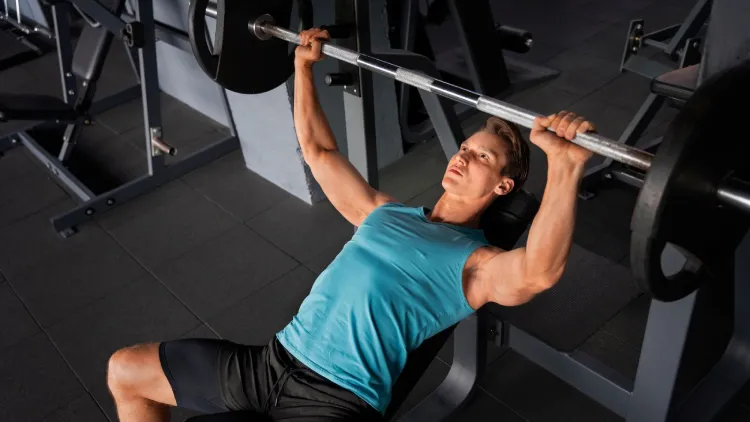
Chest Press and Fat Loss
The chest press also helps in indirect fat burning, including belly fat. It works on large groups of muscles, increasing calories burned and causing a metabolic surge after the workout. This exercise, together with cardio and healthy eating, will make the body less fatty overall and make one appear more sculpted and toned.
Nevertheless, it cannot be reduced in just one spot; fat trimming is dispersed all over the body. Men will lose fat on the upper part of the body before women may realise that their chest, waist and hips have been slimmed over.
Training Frequency and Recovery
The press of the chest works best when it is done 12 times a week. Muscle recovery requires 48 hours of rest after vigorous exercise. When fatigue and retardation occur through overtraining, like daily workouts with the chest, then it becomes counterproductive.
One of the best techniques to balance between intensity and recovery is the so-called 3-3-3 rule of working out, based on 3 sets of 3 exercises three times a week.
In the case of women or beginners, one should begin with a lighter weight and work on the form, as it will have long-term, consistent results.
Interesting Facts and Myths
- Only 1% of lifters can bench-press correctly 225 pounds – a feat of elite power.
- Chest exercises do not lead to undue bulk in the muscles in women; they lead to toning and firming of the body.
- Regular chest practice allows the control of body structure, better support of the breast, and confidence in the posture and appearance.
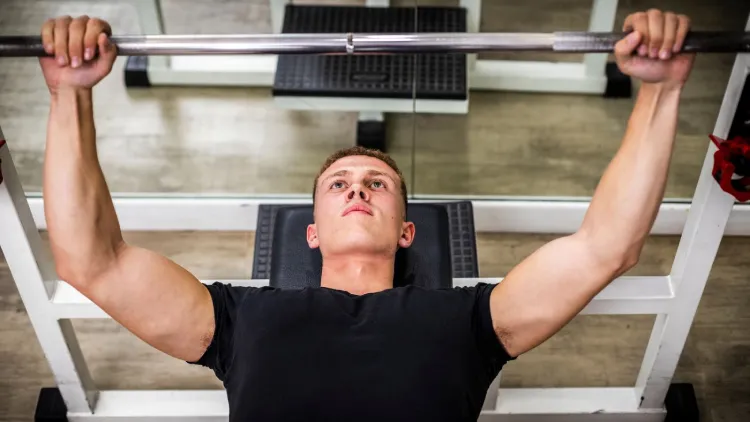
Conclusion
The chest press is a muscle-building exercise which hardens, shapes, and carves up the upper body. It helps in losing weight, enhances posture, and enhances strength and confidence in both men and women. It makes the bust of the woman and develops muscles and strength in the man.
Putting chest press in your routine with a balanced meal, and sufficient rest gives you permanent gains in your strength and tone with all the fitness.
Frequently Asked Questions
1. How many chest exercises are there per training?
Three exercises in each session, which are chest press, incline press and push-ups, are usually sufficient to achieve balanced development.
2. What is the best weight for a chest press in women?
Use 5kg-10kg dumbbells or light machine setting initially and then gradually increase due to the gain of strength.
3. What are the effects of the chest exercises on the female body?
They tighten and enhance the chest muscles, strengthen the posture, and aid the body to be toned.
4. Does the chest press enlarge or make the breasts smaller?
It does not actually make the breast thinner but tightens muscles underneath, thus extending a raised, firmer look.

